Fitbit Alta HR Review: Slim, Stylish and a Bit Frustrating
The Fitbit Alta HR is a slim and stylish tracker with a heart rate monitor, but it has some usability issues.
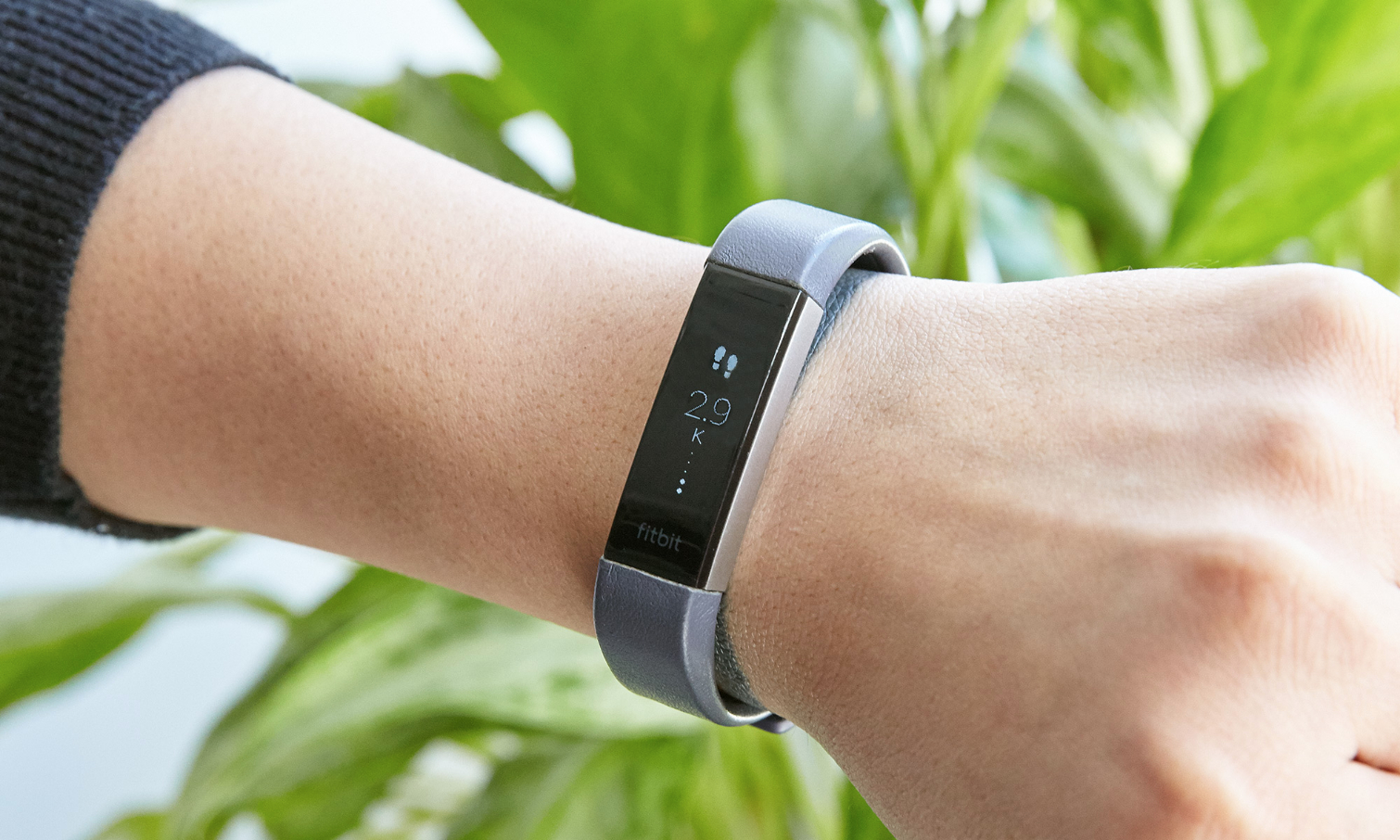
Design
When I first strapped on the Alta HR, I thought, “Finally, here’s a fitness tracker that’s packed with features but doesn't feel like a brick strapped to my wrist.” At 0.61 inches wide, it looks like a slimmer version of the Fitbit Charge 2. I found it more comfortable to wear than most trackers, whose bulk can make it uncomfortable to bend my wrist during workouts.
Unlike Fitbit's first Alta model, the Alta HR has a standard watchband-style closure, which makes it more secure around your wrist. As with many other Fitbit devices, the bands are interchangeable; classic bands cost $29.95, leather bands are $59.95 and metal bracelets cost $99.95. There are also bands designed by Vera Wang for about $60 each, or if you can drop a few hundred dollars, there are flashier metal bands and bracelets sold under the Public School brand.
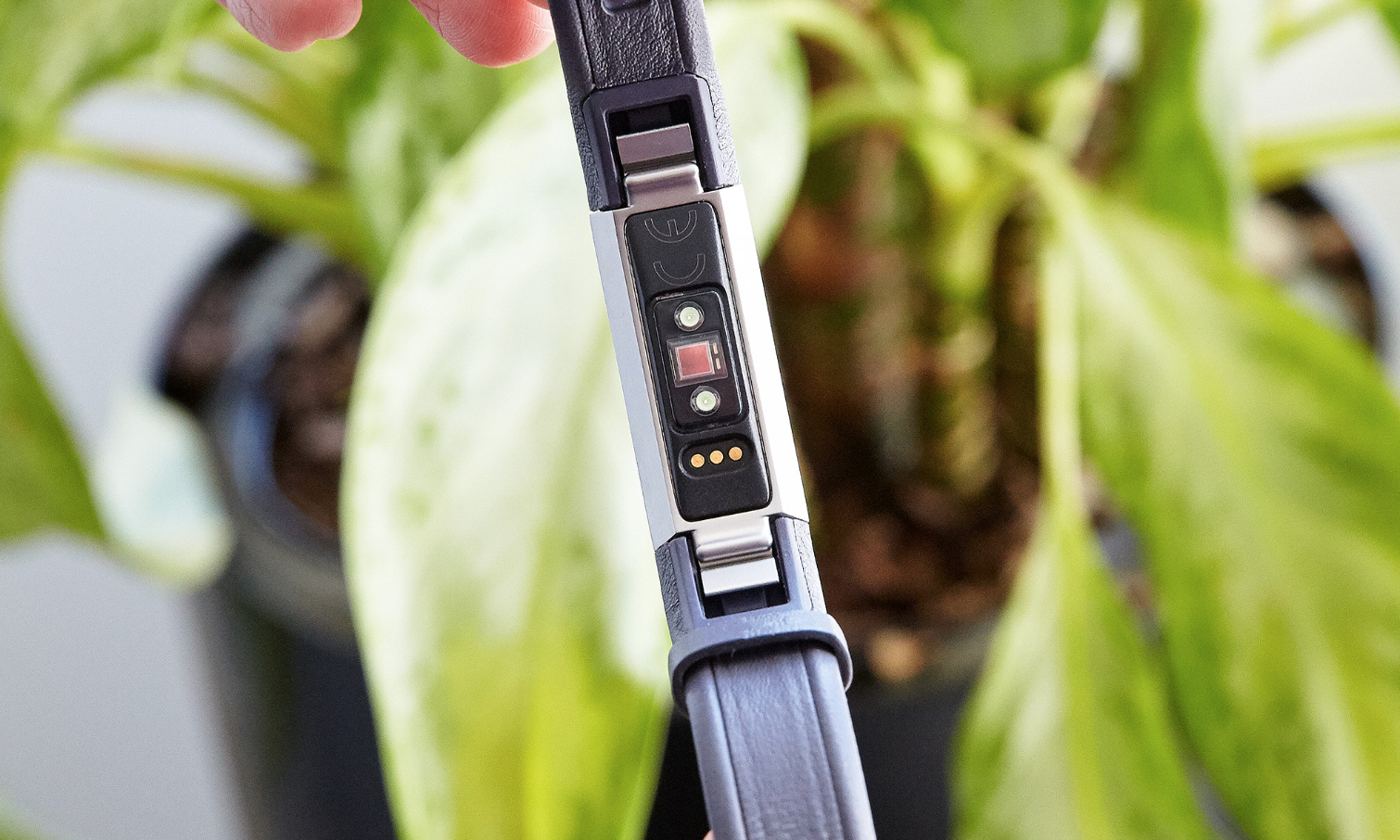
Outwardly, the main difference between the Fitbit Alta HR and the wider Charge 2 is that there's no button on the Alta HR's side to let you view and scroll through your stats. You'll have to tap the Alta HR’s display to cycle through your step count, heart rate, distance traveled and other stats.
The Charge 2’s button lets you start and stop workouts, dismiss silent alarms, and select the alarms that you want to enable and disable. With the Alta HR, you'll have to rely more on the Fitbit app to set your silent alarms and record your workouts afterward if they weren't automatically recognized.
Finally, there's a fitness tracker that doesn't feel like a brick strapped to my wrist.
If you need to tap the device at all, you might need to use more force than you'd expect. I had to slap the display nearly a dozen times whenever I needed to dismiss a silent alarm.
And there’s a downside for swimmers: You won't be able to track your pool time. The Alta HR isn't swim-proof, and you should take it off before hopping into the shower. However, it can withstand a good splashing in the sink and in the rain.
MORE: Which Fitbit Is Right for You?
Sign up to get the BEST of Tom's Guide direct to your inbox.
Get instant access to breaking news, the hottest reviews, great deals and helpful tips.
Specs
Three-axis accelerometer
Vibration motor
OLED tap display
Saves seven days of motion data
Saves daily totals for 30 days
Elastomer band comes in small, large and extra large
Fitness Tracking
Many Fitbit users are focused on taking 10,000 steps a day, thus making step-count accuracy especially important. I found the Alta HR's step counts more accurate than those of many other devices, including older Fitbit models I've used. When I took 500 steps, the Alta HR recorded 508. Because your step count displays to the nearest hundred steps on the device (such as 2.4K), slight inaccuracies won't show on your wrist. You'll be able to see the exact step count only in the Fitbit app.
In addition to tracking your steps, the Alta HR can automatically recognize and track running, outdoor biking, elliptical workouts, aerobic workouts and a broader category dubbed "sports." I found that it tracked my elliptical workouts accurately, even as my hands stayed fairly still on the machine.
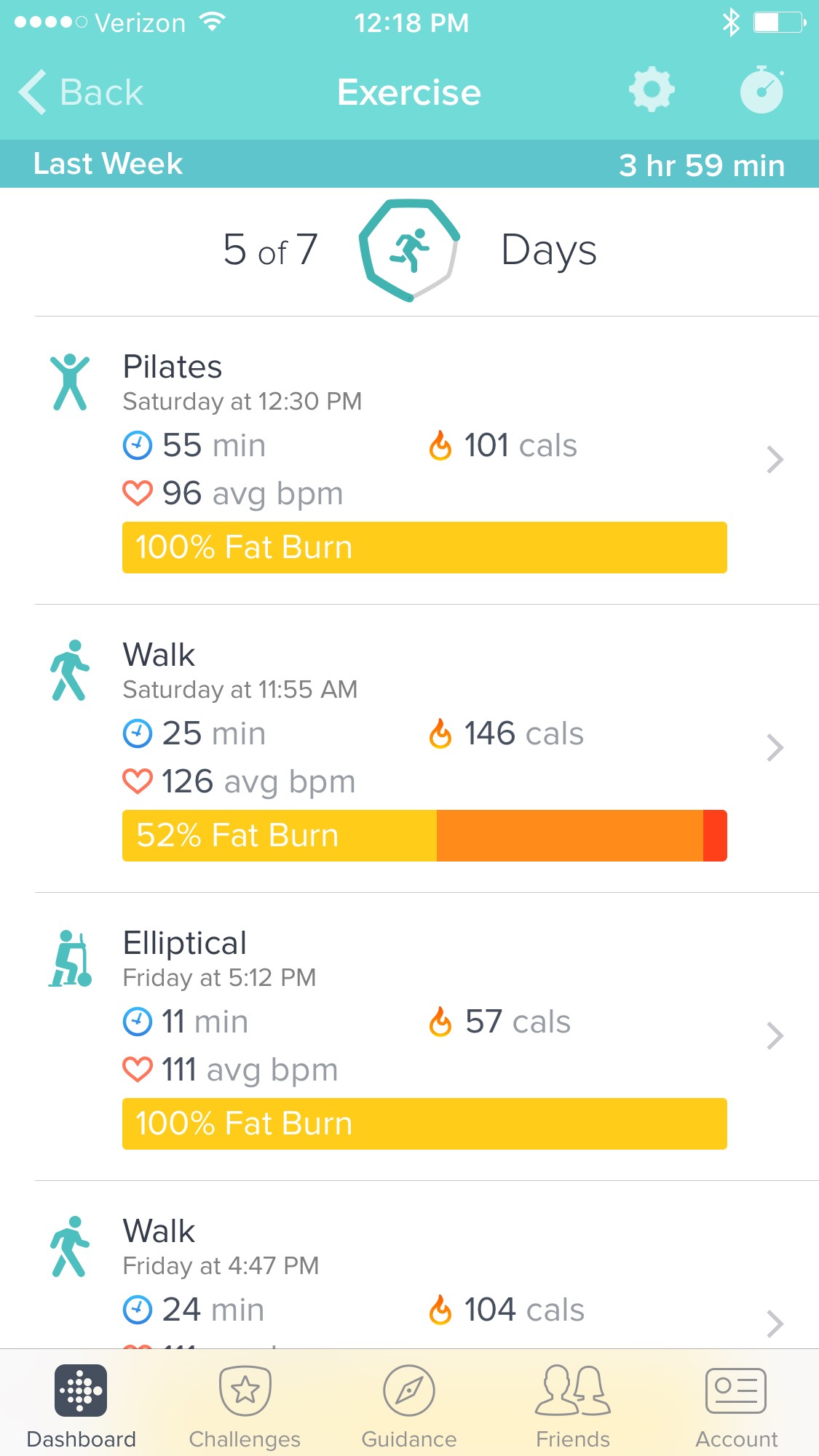
However, I found the Alta HR's PurePulse heart rate monitoring somewhat disappointing. PurePulse is the heart rate tracking system that's used in all of the Fitbit devices with optical heart rate monitoring. As I've experienced with Fitbit's Charge 2, it took several minutes for the Alta HR to get up to speed with my heart rate reading on an elliptical machine. After a couple of minutes, though, the heart rate that the Alta HR detected matched that recorded by the elliptical, plus or minus a few beats per minute.
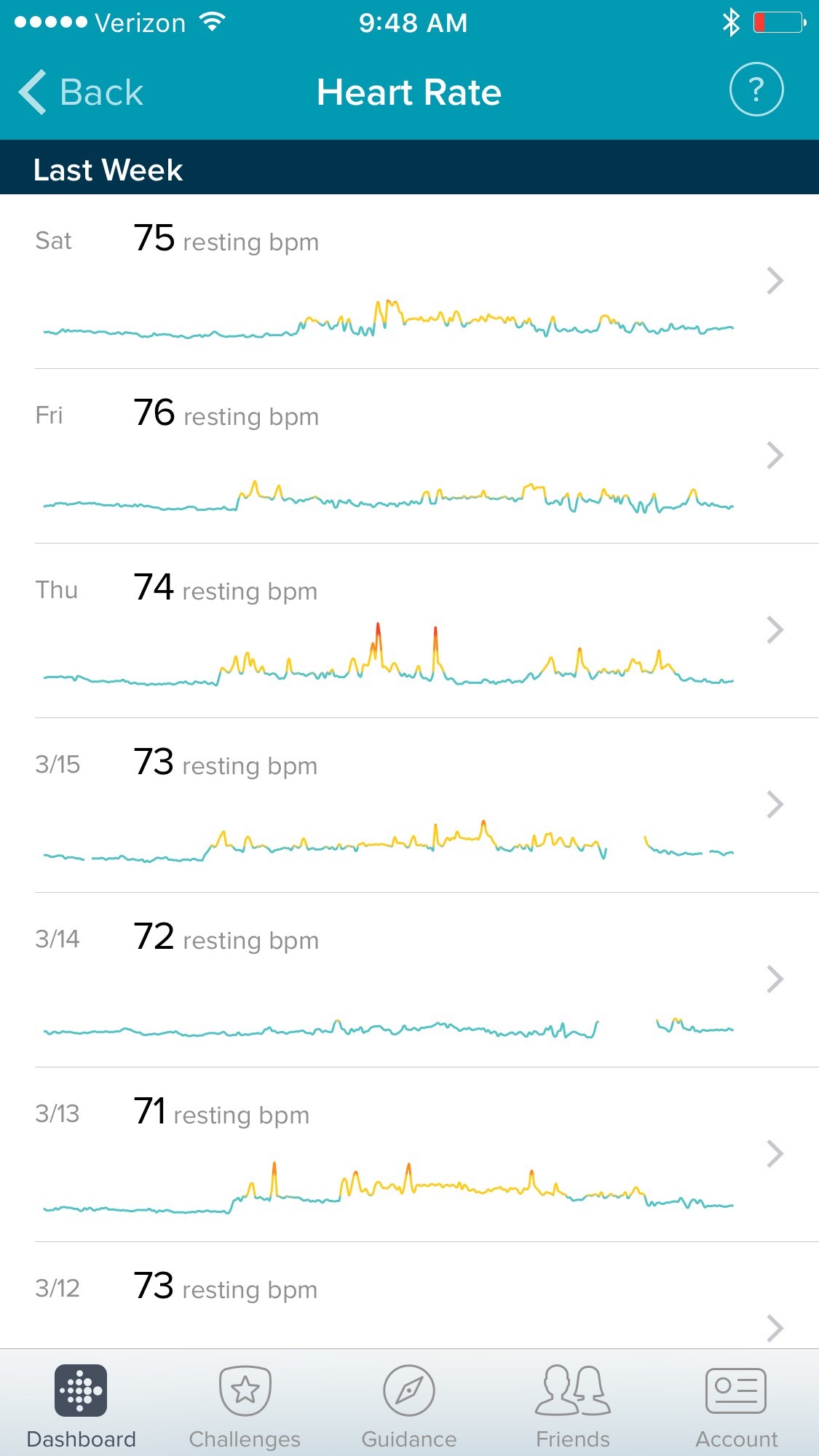
New Sleep-Tracking Features
Using your heart rate, motion data and a new machine-learning algorithm, Fitbit's new Sleep Stages feature lets users track the quality of their sleep, including light sleep, deep sleep and even REM sleep, which can affect your memory and mood. With Fitbit's Sleep Insights, you'll also get tips on how to improve the quality of your sleep.
When I used the new sleep-tracking features, the Fitbit app noted that I didn't have a regular sleep schedule — I go to bed early on weeknights and later on weekends — and that it could have a negative impact on my sleep.
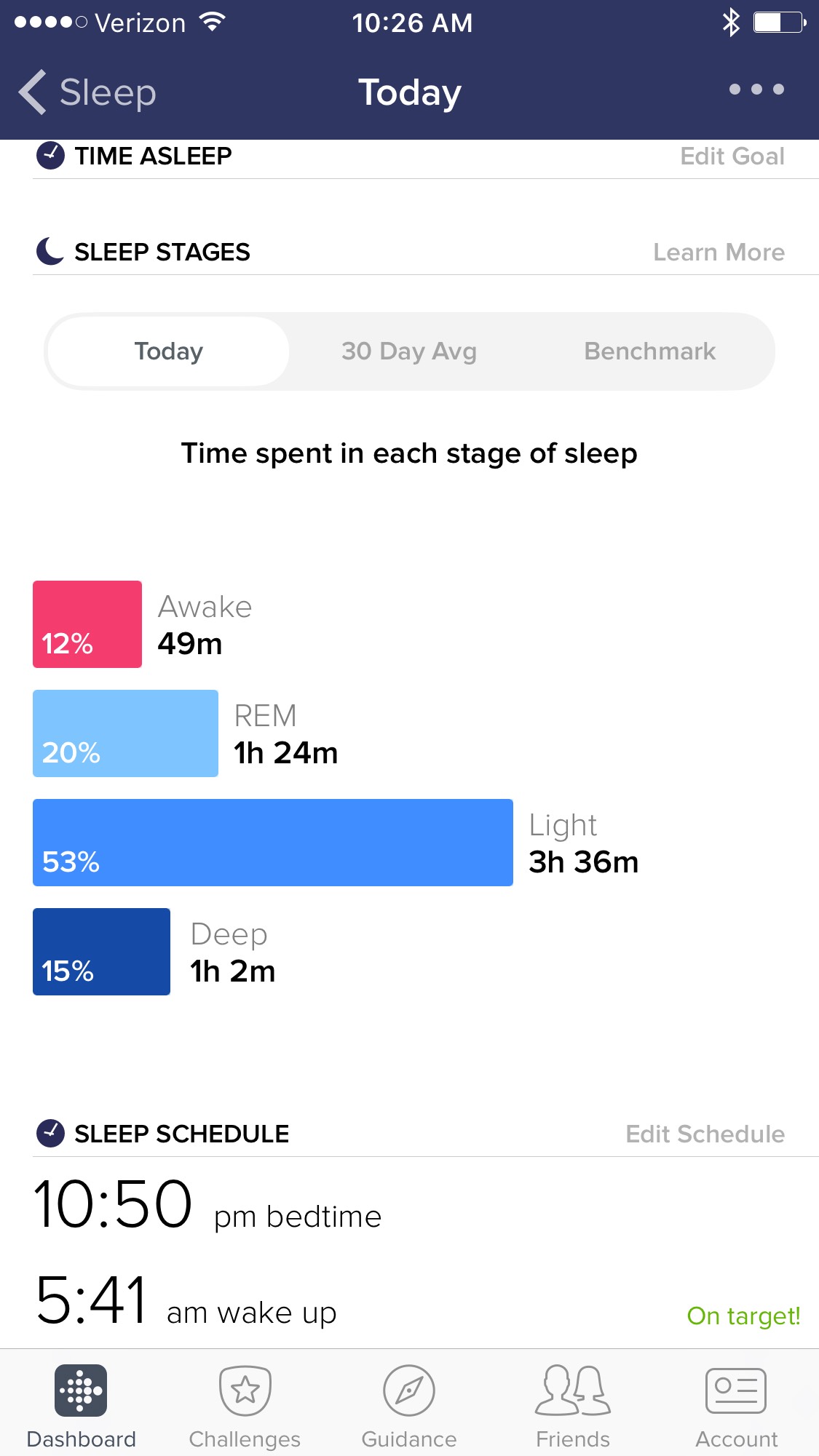
You won't need to buy a new Fitbit to take advantage of this new feature, as Sleep Stages is now available on the Fitbit Blaze and will be available on Charge 2 devices beginning this spring. Sleep Insights, the advice that's meant to encourage better sleep habits, is now available on any Fitbit device that tracks sleep.
MORE: Best Sleep Apps
Fitbit App
The Fitbit app works with Windows 10 and macOS 10.6 and up computers, the iPhone 4S and newer models, and Android 4.3 and later devices. In the app, you can see your step count, and track your exercise, heart rate, sleep stats, estimated calorie burn and more. You can view your entire activity history in the app as well, and manage multiple devices, including the Fitbit Aria smart scale, at the same time.
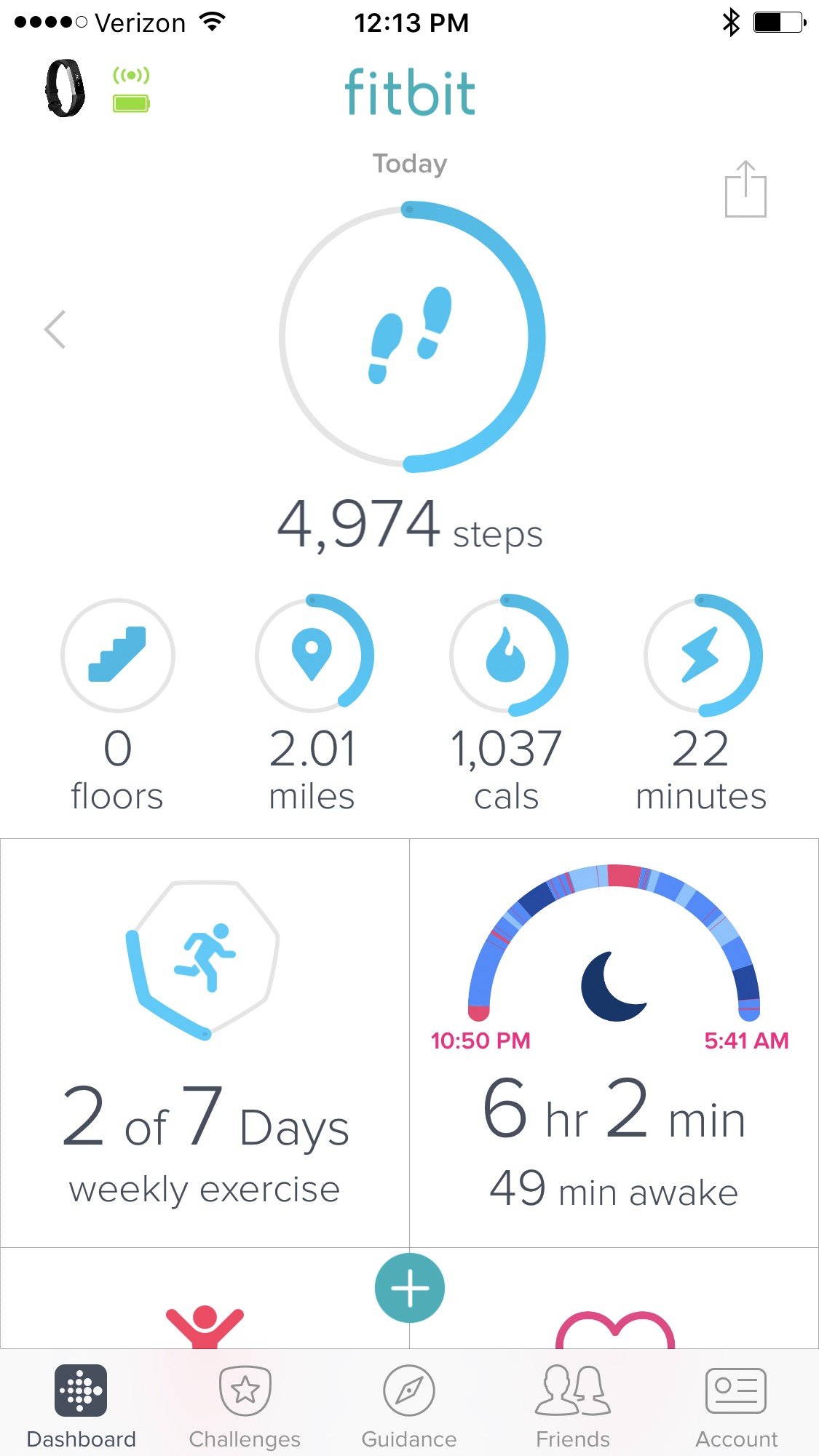
To ensure you get credit for all of your exercise, the Fitbit app lets you input data post-workout, and lets you choose from a wide variety of activities, including rowing, martial arts, CrossFit, ultimate Frisbee and even fishing. I manually logged a 55-minute Pilates class so that it would count toward my weekly exercise goal, whi11ch you can set up in the app as well. Your goal can range from exercising one day a week to seven days a week.
If you have friends who also use a Fitbit device, you can add them as friends to compare stats and compete in step-count challenges.
Notifications
You can get text and call notifications on your Alta HR. In the app, you can choose to either see just the sender's name, or the sender's name and part of the text message as well. You can also receive calendar notifications on the Alta HR, which is a new and convenient feature for people who manage packed schedules.
If you’re an office worker or otherwise sedentary, the Alta HR can give you a reminder to take at least 250 steps every hour.
Battery Life
Like every other Fitbit model, the Alta HR comes with a proprietary USB charger that clips on to the back of the device. I set five silent alarms; received a dozen or so text, call and calendar notifications each day; and had continuous heart rate monitoring that recorded my heart rate every minute, and the battery lasted a little more than six days. That's a little less than the seven days that Fitbit estimates, but it's better than other fitness trackers' three- to five-day battery lives.
To make sure that your device doesn't run out of juice, the Fitbit app gives you the option to view your Alta HR’s battery level as you cycle through your stats.
Bottom Line
The $149 Fitbit Alta HR is a sensible update to the original Alta, with heart rate monitoring and better sleep tracking, in an equally slim and stylish package. However, if you don’t mind a slightly thicker, but just as attractive, device, consider the Fitbit Charge 2, which is easier to use and won’t have you reaching for your phone as often.
Photo credit: Jeremy Lips/Tom's Guide
Althea Chang is Associate Director of Content Development for Consumer Reports and was previously a Senior Writer for Tom's Guide, covering mobile devices, health and fitness gadgets and car tech.
